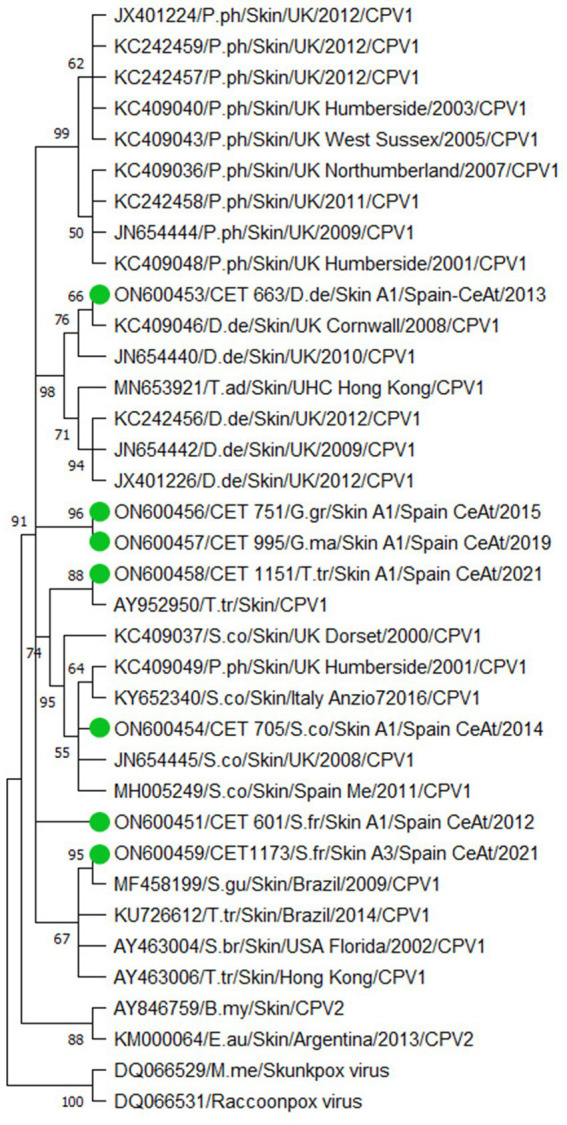Figure 1.

Phylogenetic analysis based on 29 nucleotide sequences from the polymerase gene of cetacean poxvirus. Seven sequences obtained from this study are denoted in colored green circles. The accession number, the identification number, the host, the geographic stranding, and the date of collection were used to identify the nucleotide sequences. B.my (Balaena mysticetus); D.de (Delphinus delphis); E.au (Eubalaena australis); G.gr (Grampus griseus); G.ma (Globicephala macrorhynchus); M.me (Mephitis mephitis); P.ph (Phocoena phocoena); S.br (Steno bredanensis); S.co (Stenella coeruleoalba); S.fr (Stenella frontalis); T.ad (Tursiops aduncus); T.tr (Tursiops truncates) CeAt (Central Atlantic Ocean); Me (Mediterranean Sea). To construct the tree, we designed the Neighbor-Join and BioNJ algorithms along with the Tamura 3-parameter model and Gamma distribution to model the evolutionary rate differences among sites [five categories (+G, parameter = 0.5213)]. The Bootstrap method was performed to resample 500 replicates and evaluate the reliability of the tree.
